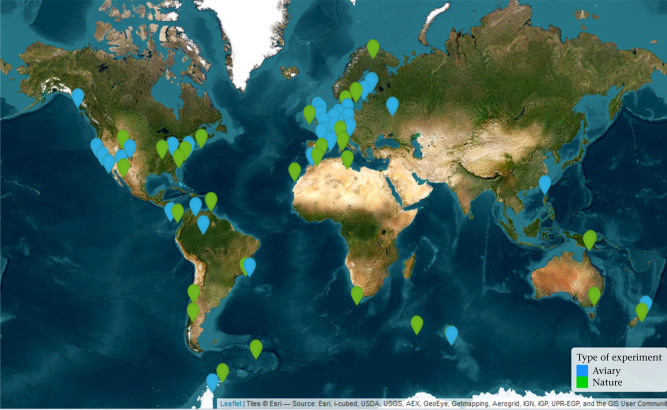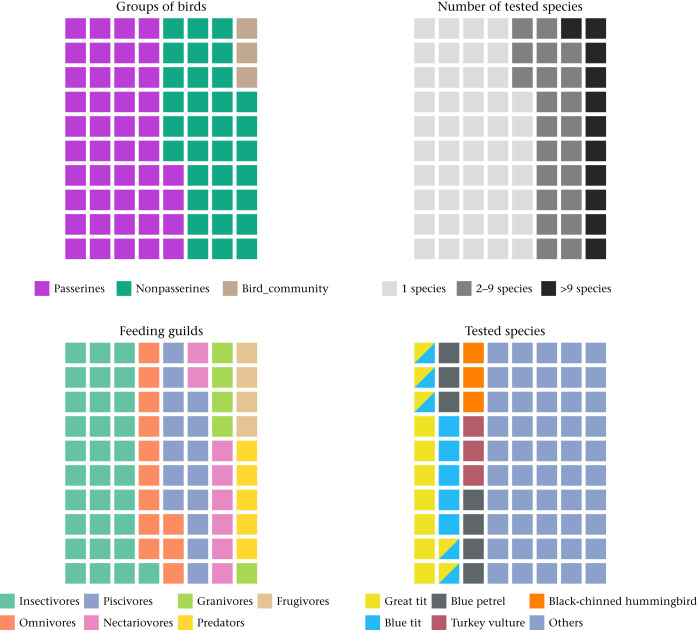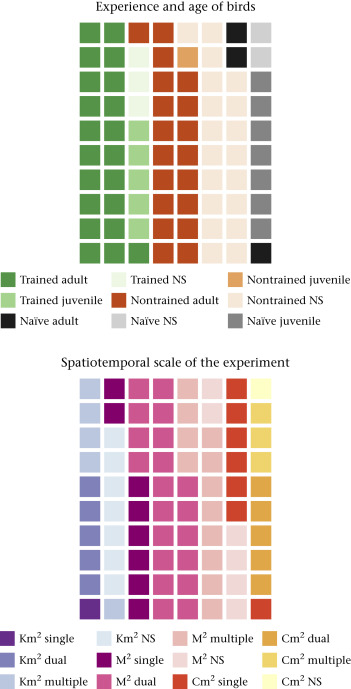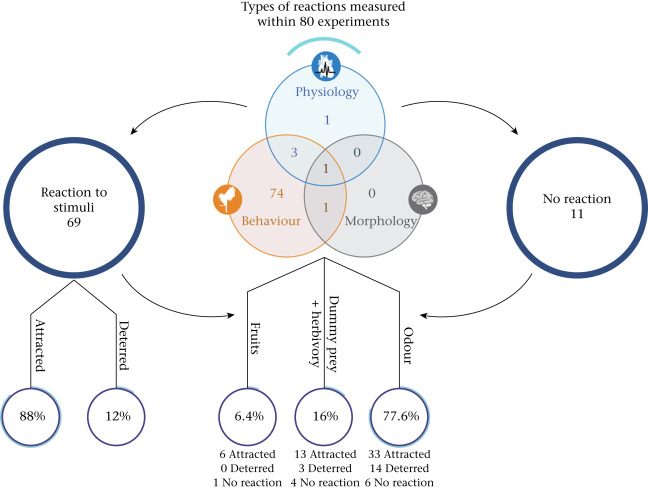Feathered noses: methodological insights into understanding avian olfaction and foraging
Abstract
Research into avian olfactory abilities has so far attracted relatively limited attention due to their complex nature and methodological difficulties. To address the challenges of avian olfactory research, we screened literature spanning four decades by searching publications in the Web of Science and Google Scholar databases. Based on the analyses of 80 experiments that focused on the foraging behaviour of birds, we highlight significant biases in the study of avian olfactory foraging, emphasizing gaps in bird taxa, geographical regions and methodological approaches. While much attention has been paid to the responses of seabirds to dimethyl sulphide (DMS) or of insectivorous birds to herbivore-induced plant volatiles (HIPVs), olfactory responses of frugivorous or nectarivorous birds remain underexplored. The predominance of studies in temperate regions further limits our understanding of bird olfaction in bird species-rich tropical areas. The detection of general traits of bird olfactory behaviour is difficult especially because of varying methodological approaches and lack of detailed information on bird and odour characteristics. Future research should distinguish between innate and learned olfactory behaviours, address the impact of environmental noise and consider individual and sex-specific differences in response to volatile compounds. Intensifying the consideration of these aspects will improve and deepen our knowledge of bird olfactory foraging behaviour and allow for ecological applications for targeted pest management and fruit dispersal strategies
Check out the full text
Mrazova, A., Sam, K., Hilker, M., Rubene, D., Amo, L., & Mäntylä, E.
(2025). Feathered noses: methodological insights into understanding
avian olfaction and foraging. Animal Behaviour, 123075.

Figure 1. A print screen from a map of all studies investigating the olfactory behaviour of birds (N = 71). Link to the interactive map: https://olfaction-review-map.netlify.app. Blue icons indicate studies conducted in aviaries; green icons indicate studies conducted under natural conditions. After clicking on an icon, a pop-up window displays information on authors, title of the study, journal, type of experiment and a link to the study.

Figure 2.
Waffle graphs showing the following distributions in the 80 experiments
(8x10 cells representing the individual experiments) focusing on
olfactory behaviour: representation of bird groups in the experiments,
the number of species tested, the number of feeding habits and the most
frequently tested bird species. Note that as several experiments tested
multiple species at once, five experiments conducted on great and blue
tits are indicated by diagonally crossed squares. In addition, 45 bird
species were tested in 50 experiments, which are summarized under
'Others'.

Figure 3. Waffle graphs (8x10 cells representing the individual experiments) showing the following distribution: representation of the experience (training) and age of the birds used in the experiments and the size and type of experiment. Large experiments conducted in the wild were considered as spatial scale km2, experiments conducted in larger aviaries were considered as scale m2 and experiments conducted in small laboratory boxes or cages were considered as cm2. Experiments were considered as single-choice (one signal), dual-choice (two signals) or multiple-choice (more than two signals). NS stands for 'value of factor not specified in an experiment'. Note that five experiments combining the scales on m2 and km2 were coded as km2 for the purposes of the figure.

Figure 4. A visualization of types of bird reactions measured in 80 surveyed experiments.